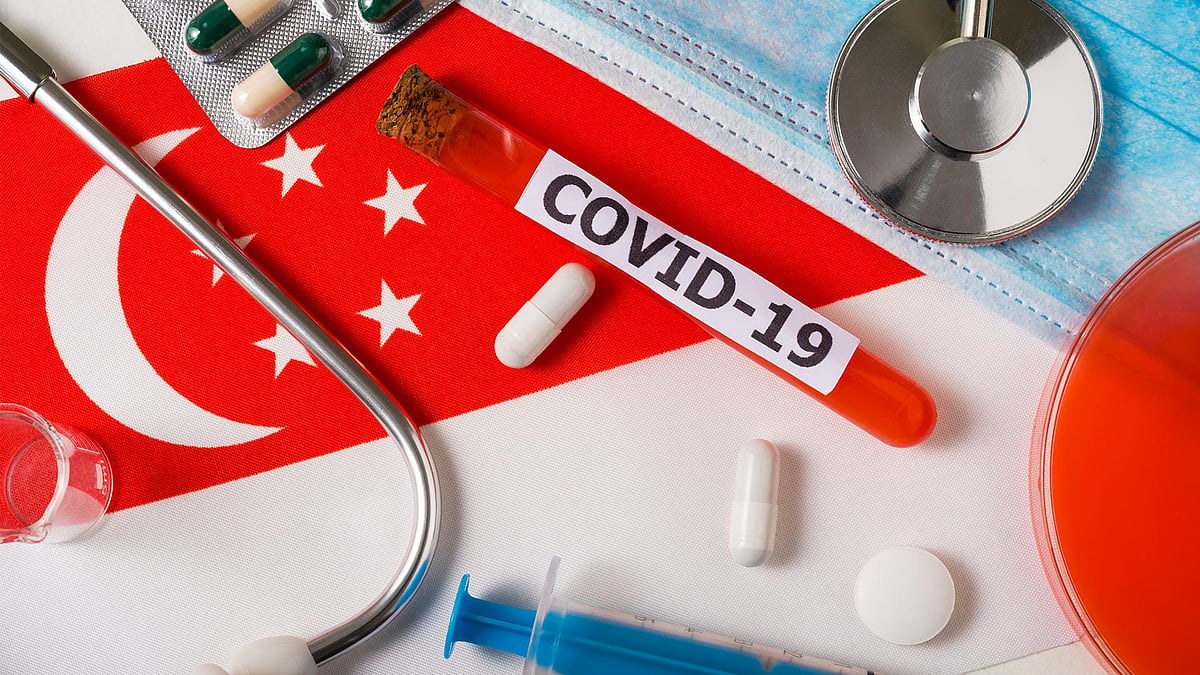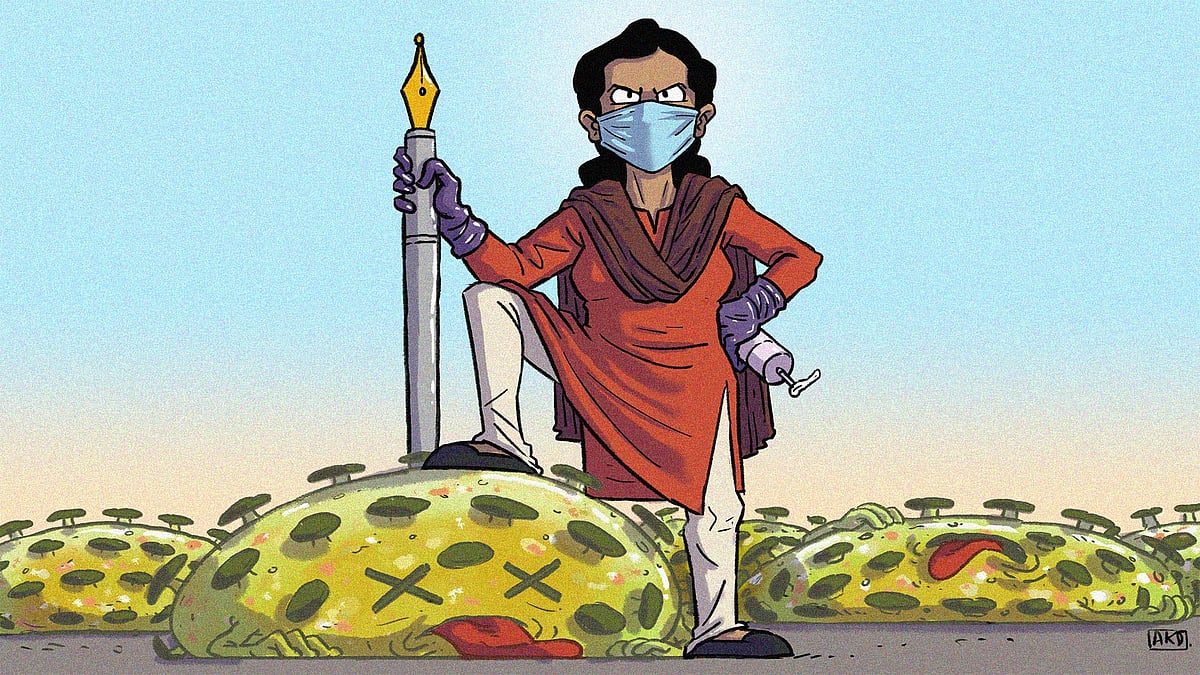India’s healthcare is not equipped for a COVID-19 pandemic, and we can’t clap that away
Lack of safety gear for healthcare workers, shortage of beds and doctors, inadequate labs to conduct tests — our healthcare system is very fragile.
India observed a “janta curfew” — a self-imposed public curfew — from 7 am to 9 pm on Sunday as a step towards containing the spread of the novel coronavirus. This happened after an appeal to the nation by prime minister Narendra Modi was made on March 19.
Novel coronavirus, also known as COVID-19, has gripped the world in an unprecedented public health crisis. With more than 170 countries affected by the virus, there have been at least 13,000 deaths out of 300,000-plus positive cases across the globe. As per data by the Ministry of Health and Family Welfare till 9 am today, India had 391 cases reported from 23 states and Union Territories. This includes seven deaths.
Over the past 15 days, several states have announced a slew of measures to tackle the epidemic. On Sunday, responding to Modi’s appeal, people mostly stayed indoors across towns and villages throughout the day. The curfew was also an occasion to express gratitude to all the emergency services professionals for their relentless efforts in battling COVID-19.
Accordingly, at 5 pm, as the prime minister had urged, citizens came out on their balconies, stood at their widows and terraces to show appreciation for all the healthcare and sanitation workers, airline and rail staff, police, and deliverymen, among others. They clapped, banged metal utensils, rang bells, blew conches, and shouted in unison to celebrate and cheer them.
Many prominent faces from the film, sports and business world joined the nationwide gesture. Social media and news channels were abuzz with visuals of celebrities clapping and banging plates in their houses.
However, the appreciatory gesture, meant to last five minutes and from indoors, quickly assumed a festive spirit. Defying the logic of the curfew and social distancing requirements, several cities saw people coming out to the streets in groups. Some burst firecrackers while many others sang and danced. In Pune, a disc jockey was roped in by a society to play “Go corona, go” at 5 pm.
Over-enthusiastic Indians clearly failed to comprehend the prime minister’s message and did exactly what they were asked not to. Social distancing to halt the infection spread was the essence of the prime minister’s appeal. The outrageous display of celebration made a mockery of the efforts of thousands of professionals fighting the epidemic at the frontline.
The jubilation had to be calmed and people had to be reminded that the threat was far from over. Modi took to Twitter, asking people to remain in their homes even beyond the curfew hours. Union health minister Harsh Vardhan also made a similar appeal.
While many Indians preferred the illusion of COVID-19 retreating from the country, the reality is alarming. The number of patients is mounting with each passing day, with newer regions reporting positive cases as testing is being ramped up. Sunday saw the biggest single-day jump as 81 new cases were reported from different parts of the country.
To fight the accelerating threat, a lockdown was announced in as many as 75 districts across states. This covers major cities like Mumbai, Delhi-NCR, Chennai, Bengaluru, Kolkata, and Hyderabad. Starting this morning, only “essential services” will be allowed in these districts till March 31, such as medical facilities, grocery stores, fire services, police services, and banking facilities.
The government has also suspended all passenger train services, including suburban and metro rail services, until March 31. To ensure the supply chain of essential products, goods trains, however, will continue to run normally.
Despite these measures by the Centre and dozens of states, a number of key questions loom over the status of our medical preparedness.
Given the country’s huge population of 1.3 billion people, there is a serious risk of the already overburdened healthcare system being overwhelmed in the event of a massive outbreak, as has happened in Italy and Iran. Moreover, studies have shown that patients with comorbidities like diabetes, heart disease and hypertension are more likely to succumb to the virus than people without these complications.
India has a staggering number of patients suffering from these diseases. For example, between the age of 20 and 79, the country had 77 million diabetics as of 2019, according to the International Diabetes Foundation Diabetes Atlas. The figure stood as the second highest in the world after China.
India also accounts for more than 20 percent of global deaths resulting from heart ailments. In 2015, the country reported 2.1 million deaths, according to a report by the Lancet journal. Similarly, a report published in the Indian Journal of Medical Research stated that hypertension led to 1.63 million deaths in the country in 2016 alone.
The statistics clearly indicate that we are significantly lagging behind in dealing with millions of patients suffering from these diseases. As they constitute a more vulnerable population to be attacked by the new virus, efforts need to be ramped up on a war-footing to avoid a catastrophe. Multiple news reports have already pointed towards the lack of equipment and facilities to fight the battle.
 'Stay home, don't move': Medical professionals share stories of heartache and courage on pandemic
'Stay home, don't move': Medical professionals share stories of heartache and courage on pandemic Lessons from Singapore: How to contain a coronavirus outbreak successfully
Lessons from Singapore: How to contain a coronavirus outbreak successfully Coronavirus: Are Indian journalists doing enough to stay safe?
Coronavirus: Are Indian journalists doing enough to stay safe?Lack of safety gear for healthcare workers
Personal protective equipment (PPE) like gloves, masks, eye protection and hazmat coverall suits have been mandated by the World Health Organisation for all healthcare workers testing or treating COVID-19 patients. But as an investigation by Scroll has shown, India may have to wait for a few more weeks to meet the requirements of all the safety gear due to a lack of transparency and clarity of standards from the concerned ministries to private manufacturers.
The minutes of a recent meeting held under the aegis of the textile ministry show how far behind we stand in terms of meeting the PPE requirements. As reported in the Times of India, it was discussed in the March 18 meeting that “the health ministry requires 7.25 lakh body overalls, 60 lakh N-95 masks and 1 crore 3-ply masks.” Though orders had been made for the same, it was noted that “there is a shortage of material and the rate of supply is not able to meet the rising demand.”
The TOI report cited government officials who said the demand would only go up as state governments were also asking for protective gear. The demand for such equipment in the private sector was separate and not counted in these estimates.
This report by Scroll also pointed out that buying gear like ventilators isn’t enough to battle the pandemic: ventilators need testing and approval, and skilled personnel to run them.
Shortage of doctors and beds
Citing data collected by the Ministry of Health and Family Welfare, The Indian Express reported that at present there is only one isolation bed available per 84,000 Indians and one quarantine bed per 36,000 Indians. Further, the data shows that there is one doctor per 11,600 people and one hospital bed per I,826 people in the country.
Then there's this table, which compares the number of critical care beds per 100,000 population in 23 Asian countries. India doesn't rank very high at 2.3.
Such figures signal an imminent breakdown of the public health infrastructure if coronavirus cases see a sudden spike in coming days.
Inadequate number of labs for conducting tests
On March 20, the Indian Council of Medical Research widened the criteria for testing suspect COVID-19 cases in the country. The earlier strategy included those with a recent travel history from affected countries or those who had come in contact with a confirmed case and shown symptoms after two weeks of quarantine. It also included healthcare workers with symptoms who had been treating patients with severe respiratory illnesses.
ICMR’s new criteria include all asymptomatic healthcare workers, asymptomatic contacts of laboratory confirmed cases and all hospitalised patients with Severe Acute Respiratory Illness.
However, as of Sunday night, the number of laboratories certified to conduct testing stood at 122. Out of these, 116 are government labs and the remaining six fall in the private sector. Even among the government labs, only 89 are operational at the moment. Twenty-seven labs are still under the process of getting ready and functional.
As per government guidelines, the maximum charge for screening test is Rs 1,500. The confirmatory test is Rs 3,000 in private laboratories.
With a little over 100 labs equipped with testing kits, India is under-prepared to fight the coronavirus spread. In fact, many experts are of the opinion that the country actually has a lot more cases than what’s been reported so far. The primary reason for this, according to them, is the inadequate number of certified labs doing the tests. The underreporting of cases can potentially lead to the third and very risky stage of the epidemic: community transmission, a stage which India is yet to enter, according to the government.
Speaking on the low number of laboratories in the country, Dr Lokesh Sharma of ICMR said, “The lists will be updated every day as attempts are on to involve more labs in both the public and private sectors. We are also requesting the private labs to conduct the tests at subsidised rates, if not free.”
Interestingly, the guidelines issued by the ICMR on March 21 for COVID-19 testing private labs brought out another problem to the fore. The guideline mandated that only those commercial kits will be allowed for doinf the tests which are “ US FDA approved and European CE certified or both”. As the Times of India reported, no test kit as validated by the Pune-based National Virology Institute can be used currently. The implications of this are very serious as most countries have banned the export of testing kits fearing a domestic shortage.
As things stand, the state of our public health infrastructure is very fragile. A tsunami of coronaviruses cases in the country, which many predict in the coming days, will sweep it away in one blow. Amid immature jubilation of many, several professionals involved in this battle have pointed out exactly that in the last few days.
A call for acknowledgement and appreciation of healthcare providers was a welcome move from Prime Minister Modi. In the early stage of the grave crisis, a nationwide salutation will certainly boost their morale for the long fight ahead. But diseases are defeated with medicines and equipment. While no cure has been found for the novel coronavirus, enough protective equipment and adequate medical facilities should be the most pressing concern for the country going ahead.
